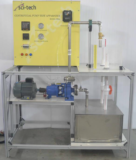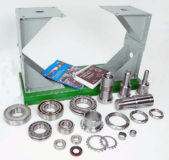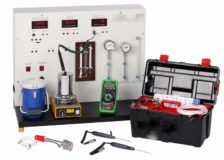Conduction Heat Transfer Unit Model TH 013
Home » Products » Conduction Heat Transfer Unit Model TH 013
Conduction Heat Transfer Unit Model TH 013
Sci-tech Conduction Heat Transfer Unit Model TH 013 is designed and developed to enable students study the principles of both linear and radial heat conduction. The unit has separate modules for linear heat conduction and radial heat conduction studies and has the provision to conduct various experiments to demonstrate Fourier law of heat conduction. Necessary instrumentation is provided to measure temperature distributions and determine co-efficient of thermal conductivities of varieties of solids. Acquisition of data and analysis of results are through a computer based system.
Item Description
Heat Transfer is an important field in Engineering and Technology. Proper understanding of the heat transfer phenomena is essential to solve any Research, Development and Design problem involving heat flow. Heat is transmitted through Conduction, Convection and Radiation. Conduction heat transfer is a prime mode of heat transfer in solids. The ease with which solids conduct heat is determined by the important property called co-efficient of thermal conductivity. Solids having higher values of co-efficient of thermal conductivity are good conductors of heat whereas those with lower values of co-efficient of thermal conductivity are bad conductors or insulators of heat. Study of conduction heat transfer is of interest to the students of several branches of Engineering and Technology including Mechanical, Chemical, Automobile and Aerospace Engineering.
See also different:

The Sci-tech Submersible Pump Test Apparatus Model FM 13S has been designed to enable students to study the operation and performance characteristics of a typical centrifugal pump. The module consists of a variable speed centrifugal pump assem [...]



